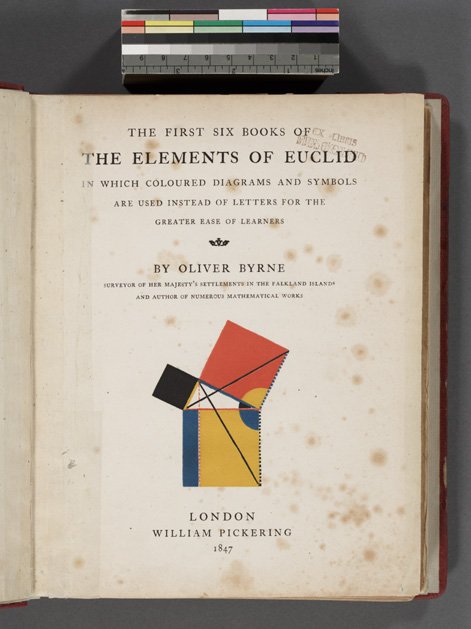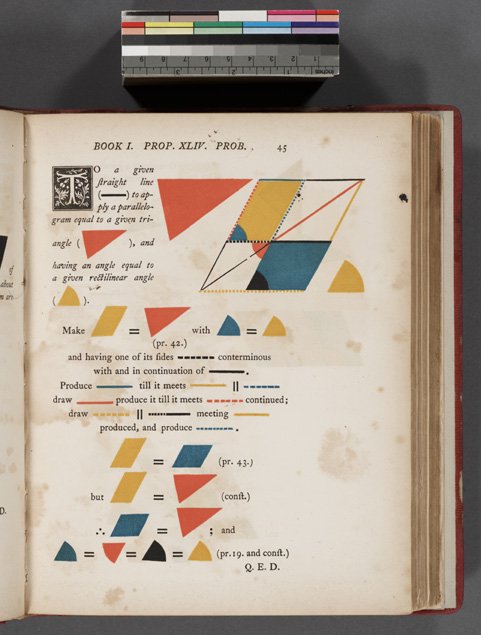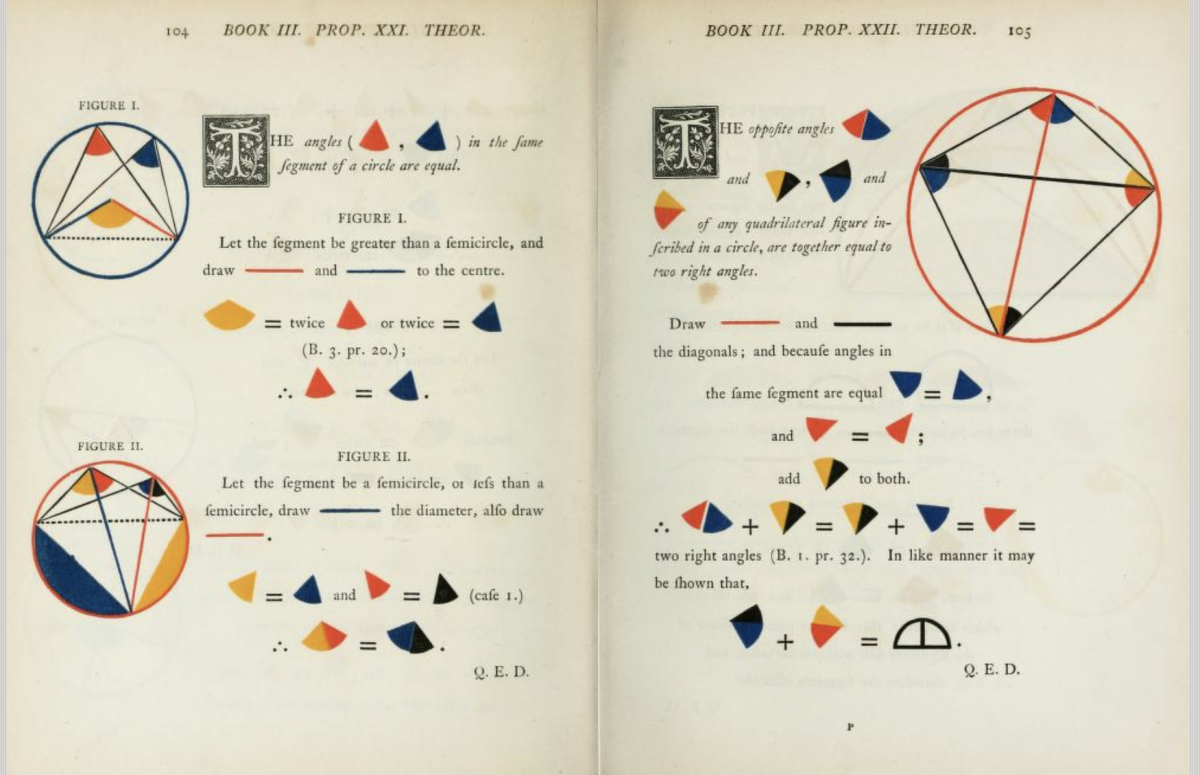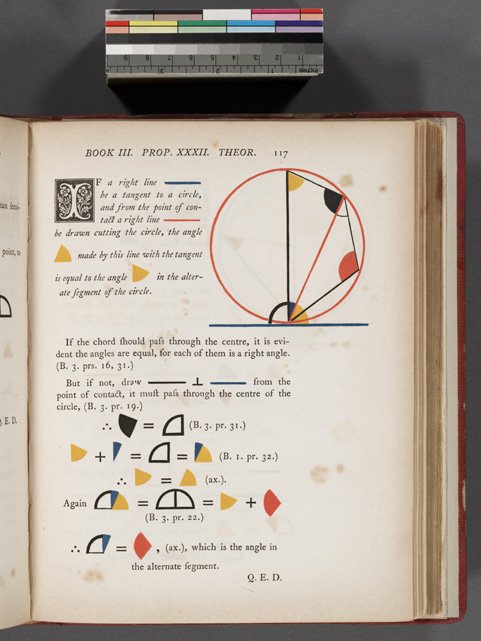- About MAA
- Membership
- MAA Publications
- Periodicals
- Blogs
- MAA Book Series
- MAA Press (an imprint of the AMS)
- MAA Notes
- MAA Reviews
- Mathematical Communication
- Information for Libraries
- Author Resources
- Advertise with MAA
- Meetings
- Competitions
- Programs
- Communities
- MAA Sections
- SIGMAA
- MAA Connect
- Students
- MAA Awards
- Awards Booklets
- Writing Awards
- Teaching Awards
- Service Awards
- Research Awards
- Lecture Awards
- Putnam Competition Individual and Team Winners
- D. E. Shaw Group AMC 8 Awards & Certificates
- Maryam Mirzakhani AMC 10 A Awards & Certificates
- Two Sigma AMC 10 B Awards & Certificates
- Jane Street AMC 12 A Awards & Certificates
- Akamai AMC 12 B Awards & Certificates
- High School Teachers
- News
You are here
Mathematical Treasures - Oliver Byrne's Euclid

This is the title page of Oliver Byrne’s 1847 edition of Euclid's Elements, the first six books. Using color and pictures, Byrne attempted to teach Euclid's geometry by minimizing textual discussion, including labels. This innovative approach stressed visualization. The picture on this page illustrates Euclid’s Proposition 47 of Book I, the Pythagorean Theorem. Oliver Byrne (1810-1880) was trained as a civil engineer but was also employed as a surveyor and a sometime professor of mathematics. Augustus DeMorgan described him as “eccentric and a minor mathematician.” However, his Elements of Euclid was proudly displayed at The Great Exhibition of 1851 and credited with being “one of the oddest and most beautiful books of the century.”

Page 45 of Byrne’s Euclid presenting Proposition 44 of Book I.

Pages 104–105 consider properties of figures inscribed in circles.

Page 117 of Byrne’s Euclid discusses Proposition 32 of Book III.
A complete copy of Byrne's The First Six Books of the Elements of Euclid can be viewed at Bill Casselman's website at the University of British Columbia, Canada. Another version with interactive elements and merchandise was designed by Nicholas Rougeux.
For the most complete biography of Oliver Byrne to date and ideas for how to use Byrne's 'Euclid in Colours' in the classroom, see the Convergence article, "Oliver Byrne: The Matisse of Mathematics."
Frank J. Swetz and Victor J. Katz, "Mathematical Treasures - Oliver Byrne's Euclid," Convergence (January 2011)




